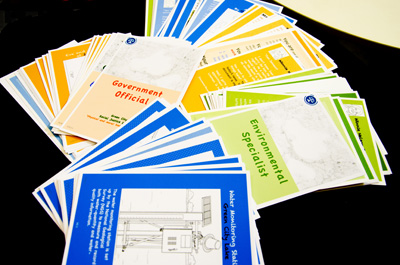Why Singapore’s English Teachers Should Embrace Singlish, Not Fight It
Is it time for Singaporean educators to embrace Singlish as a legitimate learning tool? What the Research […]
Read More
Games are being used in classrooms not just because they are fun. If designed well, they can foster deeper and broader learning in our students.
“Life is more fun if you play games,” wrote Roald Dahl, a British novelist and author of children’s books. Learning has become a lot more fun too for students as more educators are using games in their classrooms.
Why are they doing so? Fun is only part of the reason. Dr Mingfong Jan, a Research Scientist at NIE, tells us that well-designed games not only enliven the classrooms, but also engage students in deeper learning.
 “If we go back to 19th century, the question would have been, why are we using textbooks as a learning tool? I would reply, because our goal is to help students acquire content and basic literacy skills,” says Mingfong, an expert in game-based learning.
“If we go back to 19th century, the question would have been, why are we using textbooks as a learning tool? I would reply, because our goal is to help students acquire content and basic literacy skills,” says Mingfong, an expert in game-based learning.
The basic literacy skills and content mastery are still important, but insufficient today. We also want students to develop 21st century competencies and skills that will prepare them for the future.
Such skills, such as problem solving and collaboration, are hard to foster through direct instruction. Instead, the goal now is to have “designed contexts” in which students can learn those skills.
“From learning content to learning higher order thinking skills in context, that’s a big transition,” says Mingfong.
“We have to see learning as a process where a lot of learning experiences cannot be explicitly taught using conventional ways. It must be cultivated through guided participation in the context of problem solving, inquiry and collaboration.”
He strongly feels that games can be designed to provide contexts for students to engage in such learning, and even values and moral education.
“In school, we learn content but we don’t learn it as tools for problem solving. Games happen to be a really good medium for you to use information for problem solving and inquiry.”
He gave an example of a board game that he designed: Green City Blues. For this game, players form teams to investigate the mysterious death of a man called Ivan who lived in Green City. Could it be a murder, suicide or even a brewing public health crisis?
In a team, each player plays a different role, such as an environmental scientist, government official or medical doctor. Each player has exclusive access to certain types of information, such as medical records and secret government documents. The team has to piece together all the information and find out the cause of death.
“It’s role playing, collaboration, and problem solving all at the same time. And because they have to inform the public what happened to Ivan, it’s also about the values of being a citizen.”
All games are not created equal for learning, however. Games such as Candy Crush and Bubble Breakers are used to train specific skills such as pattern recognition.
Mingfong finds that such games are more popular in Singapore classrooms, possibly because they are easy to use.
(Learning) must be cultivated through guided participation in the context of problem solving, inquiry and collaboration.
– Mingfong on the learning process
A Math teacher, for example, can easily Google for a game on multiplication and then use it in class. Such games are fun for students, and they’ll be motivated to play them again and again and thus become better at multiplying numbers.
Compare that with a complex role-playing game like Civilization, which puts players in a situation where they must work with other players and come up with strategies to build and sustain an empire.
Such a game can be described as transformative, because it has the potential to transform the teaching and learning experience.
For example, in such a game-based learning environment, students are players who make their own decisions in the game. Teachers become game masters who guide their participation instead of teaching content. But some teachers would still feel the urge to teach, by stepping in to conclude or explain things to students.
“If you don’t do this, you feel you’re not being responsible to your students!” says Mingfong. “It’s a very different kind of role playing in the classroom. It may be out of the teachers’ comfort zone, but we need to help teachers to feel comfortable about changing their teaching approach.”
As such, game-based learning is not just about the games themselves, but also very much about the classroom “game”, or classroom culture. It has the potential to change rules, roles and tasks in the conventional classroom.

Game cards designed for the board game, Green City Blues.
Very often, technology such as digital games comes to mind when we talk about game-based learning. But it need not be the case.
“When you can change the classroom using high technology and with sufficient technical support, that is an ideal situation. I would call it a ‘perfect storm’, where everything meets your requirements.”
But as all teachers know, the conditions are seldom just right in a classroom! In such a case, a “thunderstorm” can still be generated without expensive or complex games.
“Another way is to use low-cost technology, even paper or cards. Students tend to be motivated by any kind of games you use in the classroom,” Mingfong says.
“Think about the different ways to change the classroom, such as ‘gamifying’ the classroom. It can be any game where students and teachers play different roles, and you use game mechanics to create a scenario for problem solving.”
The ultimate aim, really, is to change the classroom culture and the way students and teachers interact with each other, so that both learning and teaching can become richer and, yes, even fun!